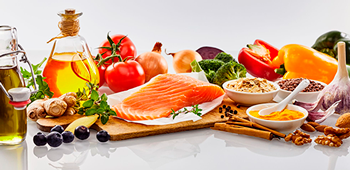
Every time that we notice we are gaining extra weight or every time that we commit to dieting or exercising, we usually start by obsessing about calories. But we need to understand what is a calorie? We either start by paying close attention to how many calories are in each of our snacks and meals, or we focus on calculating how many calories we are able to burn during a routine of exercises.
What is a calorie, why do we measure calories and why are they so important when it comes to weight loss?
There has been talk about the calorie as far back as 1825. Yet it still causes a lot of confusion and questions. Who invented it? What exactly does it measure? What is a calorie? And most importantly: how do we burn them? We will cover the basics and everything you need to know about a calorie.
A brief history about the Calorie
The word calorie comes from the French word chaleur, which in turn comes from the Latin word calor, that means heat, and it was coined as a unit of heat somewhere between the years 1787 and 1824 [1]. According to the Dictionnaire historique de la langue française, the word calorie was widely used in France by 1845, mostly by engineers and later on by physicists. Back then, the word meant:
The quantity of heat needed to elevate 1 kg of water to 1˚C of temperature.
Because the gram (g) was not considered the base unit in the metric system when the Calorie was defined, there was no need to add the “kilo” prefix [1]. Later came the need to distinguish between a “small” calorie from a “large” calorie, as some scientists used the calorie unit as a g unit and others as a kg unit. So, given this first confusion, that started by the 1870’s, when we talk about calories, it is important to first distinguish between two different units that went about with almost the same names:
- calorie (with initial lowercase letter), also known as g-cal, is the amount of energy required to heat 1 gr of water by 1ºC.
- Calorie (with initial capital letter), also known as the kcal, used in everyday life, is the amount of energy required to heat 1 kg of water by 1ºC.
The latter is the most modern usage of the word calorie and it is the one we usually find in the Nutritional Information of our food labels.
You might notice, however, that the definitions described above mention nothing about food nor metabolism. Precisely, at first, the concept was not linked to human energy, nor food, but to machines, industrial efficiency, and chemical reactions.
The kcal as energy in food
But how did this unit of measure become related to food? It was J.R. Mayer who first started researching about the efficiency of energy in the body’s metabolism. He used the kcal unit in 1846 in the context of relating physical work against gravity to the energy supplied by foods [1]. It was years later, in 1887, that Wilbur O. Atwater described the kcal to American audiences as the energy content of food in a series of articles published in Century magazine [1].
Now the most important notion about a calorie is that it represents amounts of energy. The more calories something has, the more energy it provides if consumed.
Nowadays, kcals are usually established as a measure that equals 4.186 kilojoules. You might have already noticed that on modern food labels, the calories are usually right next to another unit: kJ, also known as kilojoules.
A Calorie (kcal) = 4.186 kilojoules (kJ).
The kilojoule is another unit of heat, named after James P. Joule, that on 1930 was established as a standard measure for heat by the Consultative Committee of Thermometry, so that any secondary thermal unit would be defined relative to the joule rather than on the heating of water at any temperature [1].
It is highly possible that in the next decades we will begin to talk more about kJ than about burning kcal being on our food. Although there is no active campaign or public policy to remove the measure of Calories from food labels, there has been a higher tendency to either include or prefer kJ as an international standard. It was the Committee on Nomenclature of the American Institute of Nutrition who advised in 1970 the usage of kJ instead of Calories in scientific publications [1].
The only problem is that, while the word calorie is highly popular and everybody recognizes as a food quality, the word kilojoule and the unit that it represents still remains unknown to most consumers.
If calories only represent energy or heat… then why do excess calories transform to fat?
Our bodies consume food so that we can eventually transform each molecule of carbs, proteins and fats into energy. This energy is measured in our everyday foods as calories. Whenever we eat a certain amount of food, its energy is instantly distributed to sources which need it most: red blood cells, brain, heart, lungs, bowel, liver, spleen and so on. All the remaining energy that was not consumed is transformed into fat and stored away… usually in the most unflattering places of our body.
But why exactly do excess calories become stored fat?
Why can’t we just get rid of them as another natural process? Well, because storing calories as fat used to be a self-preservation mechanism that allowed us to thrive as a species since prehistoric times. The homo sapiens that exist to this day are descendants of nomads whose bodies or metabolisms adapted to situations where food was very hard to come by, having to look for animals to hunt or fish, vegetables to pick, with limited resources and abilities to preserve fresh food for a long time, and not knowing where or when more food would be available again. How did they manage to survive? By becoming excellent energy storage machines.
Since they ate so little and meals were so far apart, the ones that survived were able to do so by storing any and every excess amount of energy from their infrequent meals. This eventually helped this subset of individuals to thrive. In essence our metabolisms haven’t changed. We are designed to store any and EVERY excess amount of energy in case we need it later on.
Sadly, evolution hasn’t caught up with the current state of the world. Today foodstuffs are mass produced, eating 400 kcal is as easy as unwrapping a candy bar and wolfing down meats is easy and relatively cheap due to mass animal farming. This situation puts us in an awkward position where our bodies are still programmed to store away excess energy in the form of fat when in reality our lifestyles have become sedentary and there won’t be a large predator chasing us, we don’t need to travel long distances on food, and there certainly isn’t going to be a shortage of food anytime soon.
What we’re witnessing now is the bodies’ response to this new-found world where high caloric foods can be instantly obtained. A world where getting from point A to point B no longer requires hours/days/weeks/months of trekking but simply pushing a pedal, boarding a train, boarding a plane.
The outcome: Less physical activity + instantly available high calorie foods = obesity
And which is the recommended calorie intake to avoid obesity?
The recommended amount of calorie intake depends on many factors, like gender, age, size, level of physical activity, metabolism rate and overall health. The recommendation is 2,000 calories a day for women, and 2,500 calories a day for men. This is assuming that both are adults and moderately active. If you lead a more sedentary life, you should consider at least 200 calories less a day. But if you are an athlete or are highly active, you could be needing at least 400 more calories a day.
Considering this recommended calorie intake is a very useful strategy when you are on a healthy diet or are being extra-careful with how much you eat. All you need to do is calculate the number of calories provided in each portion of food you consume, and you’re set. Although the best strategy of all is to choose healthy foods from the start, eat comfortably but not exceedingly, and do light exercise, such as walking or keeping physically active, for at least 30 minutes a day.
At LIMARP International Center of Excellence for Obesity, located at Tijuana, Mexico, we offer nutrition guidance and counseling as part of our treatments for obesity. Our integral bariatric program considers bariatric surgery along with psychologic counseling, a dietary program tailored for each patient’s needs, and a personalized exercise routine designed by our own fitness expert.
If you are interested in knowing more about calories, your daily intake, diets or bariatric solutions, don’t hesitate and call our clinic today at our phone number (619) 270 8823 or send us a message online. We will be glad to help.
Bibliography
Hargrove, J. L. (2006). History of the Calorie in Nutrition. The Journal of Nutrition, 136: 2957-2961. https://academic.oup.com/jn/article/136/12/2957/4663943


